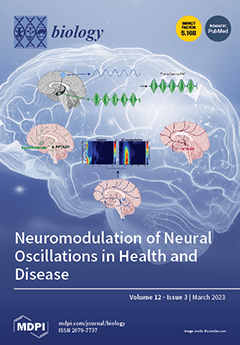Following the discovery of
WWOX, research has moved in many directions, including the role of this putative tumor suppressor in the central nervous system and related diseases. The task of determining the nature of
WWOX in glioblastoma (GBM) is still considered to
[...] Read more.
Following the discovery of
WWOX, research has moved in many directions, including the role of this putative tumor suppressor in the central nervous system and related diseases. The task of determining the nature of
WWOX in glioblastoma (GBM) is still considered to be at the initial stage; however, the influence of this gene on the GBM malignant phenotype has already been reported. Because most of the available in vitro research does not consider several cellular GBM models or a wide range of investigated biological assays, the present study aimed to determine the main processes by which
WWOX exhibits anticancer properties in GBM, while taking into account the phenotypic heterogeneity between cell lines. Ectopic
WWOX overexpression was studied in T98G, DBTRG-05MG, U251MG, and U87MG cell lines that were compared with the use of assays investigating cell viability, proliferation, apoptosis, adhesion, clonogenicity, three-dimensional and anchorage-independent growth, and invasiveness. Observations presenting the antineoplastic properties of
WWOX were consistent for T98G, U251MG, and U87MG. Increased proliferation and tumor growth were noted in
WWOX-overexpressing DBTRG-05MG cells. A possible explanation for this, arrived at via bioinformatics tools, was linked to the TARDBP transcription factor and expression differences of
USP25 and
CPNE2 that regulate EGFR surface abundance. Collectively, and despite various cell line-specific circumstances, WWOX exhibits its anticancer nature mainly via a reduction of cell viability and invasiveness of glioblastoma.
Full article






